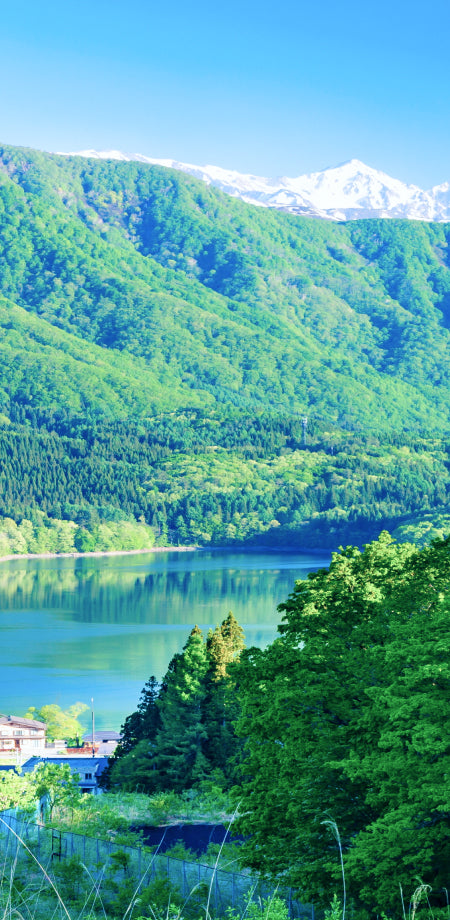投稿日:
更新日:
Which do you prefer innovate or tradition?ShinshuHigh-class grapes that are proud of
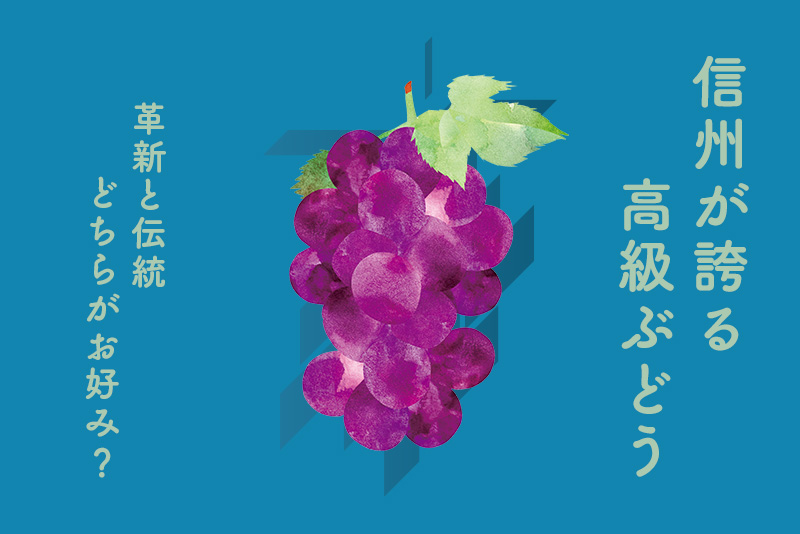
Various crops such as nocturnal, apples, mushrooms, and more are now in season, and it's finally hereShinshuThe fruitful autumn has arrived.ShinshuWhen you hear the autumn flavor, many people probably think of "grapes." Grapes are said to have more than 10,000 varieties all over the world, and more than 100 varieties in Japan. With the desire to "make grapes that are even tastier and more beautiful to look," a variety of varieties have been created, and they are decorating our autumn dining table.
Queen Rouge®, the shining red "Queen of Grapes" has made her debut!
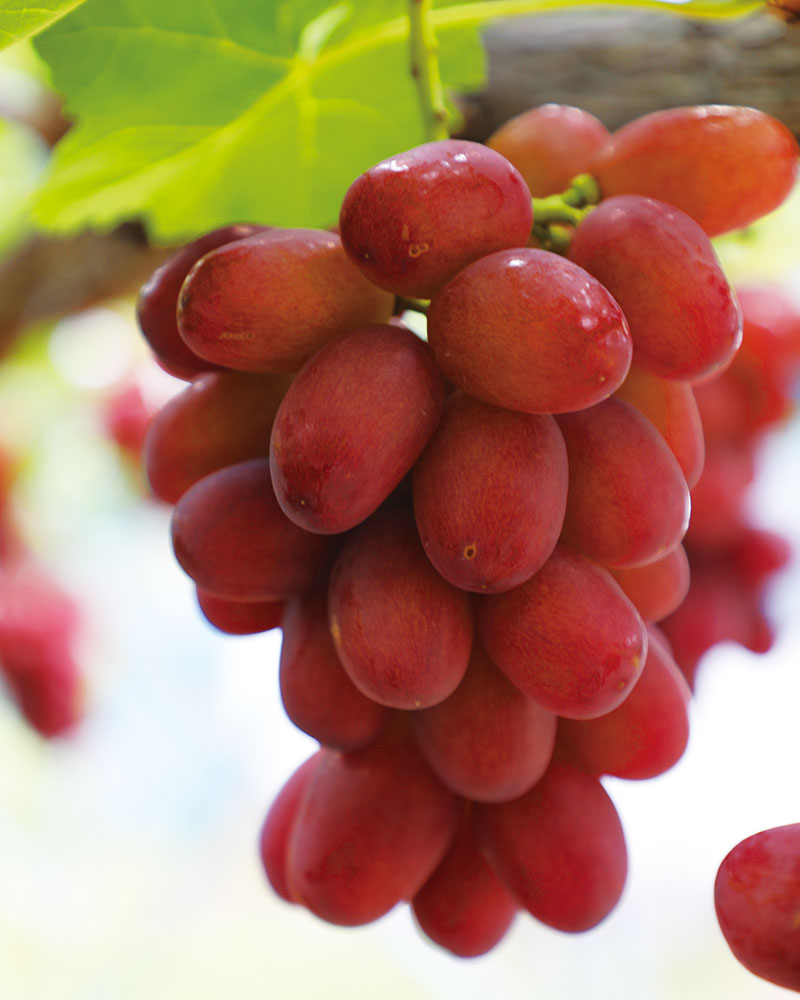
Development of new varietiesTimesThat's what it takes. Many people have also worked hard to create Queen Rouge®.
Nagano Prefectural Fruit Tree Experiment Station (Suzaka City)
Researcher, Breeding DepartmentIchikawa Etsuko
Top class sunlight in the nationTimesIt combines the conditions necessary for delicious fruit cultivation, such as the large temperature difference between day and night. Nagano prefecture. It boasts the second largest producer of grapes in the country, a representative autumn fruit, and a variety of varieties are grown all over the prefecture.
That Nagano Queen Rouge® is a new varieties of high-quality grapes that have been developed over the prefecture over 10 years. At the time of development, demand for seeds-free grapes like Shine Muscat, which can be eaten with the skin increased, so the company aimed to create a "red" variety with the same characteristics, and was born by crossing Shine Muscat with a unicorn, which is characterized by a long, reddish purple color and elongated shape.
The most distinctive feature is the bright red color, and while the skin is slightly thinner than Shine Muscat, the flesh is firm, and the skin is crisp and easy to cut. Farmers in the prefecture have been producing multiple red grape varieties for about 40 years, but the coloring and discoloration have not been stable, and they have been repeatedly trial and error. That is why there is high hopes for this Queen Rouge®, which has finally been produced, and producers also have a strong reputation for being "the red color is clear and the grains are solid, making it easy to make."
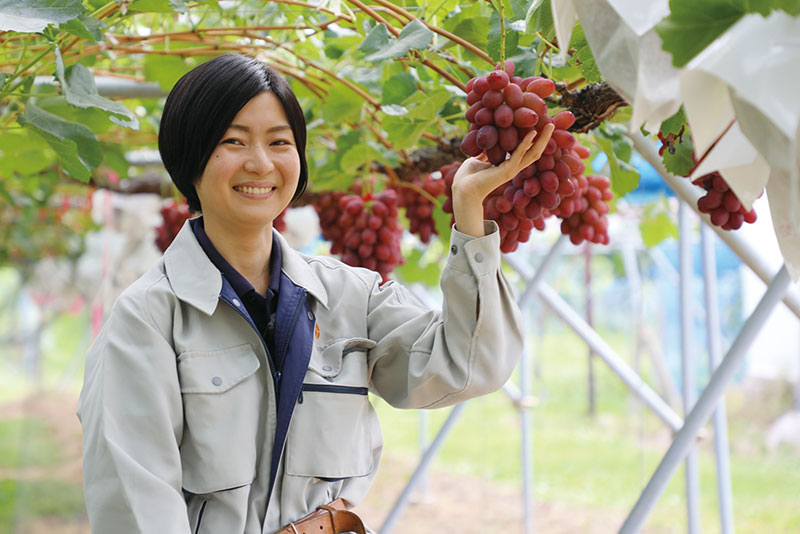
Researcher Ichikawa Etsuko. "It is very difficult to stabilize the coloring of red varieties, so I would like to make it a more beautiful red color, and I would like to continue to explore ways to cultivate it to stabilize the color," he says.
Also, as Ichikawa Etsuko, a researcher involved in development since 2018, said that when she first ate it, she had the impression that it was sweeter than any other variety, and the average sugar content is 20 degrees, which is more sweet than Nagano Purple (18 degrees or higher) and Shine Muscat (19 degrees or higher) and is satisfying. Take a bite and the refreshing aroma of Muscat and elegant sweetness fill your mouth.
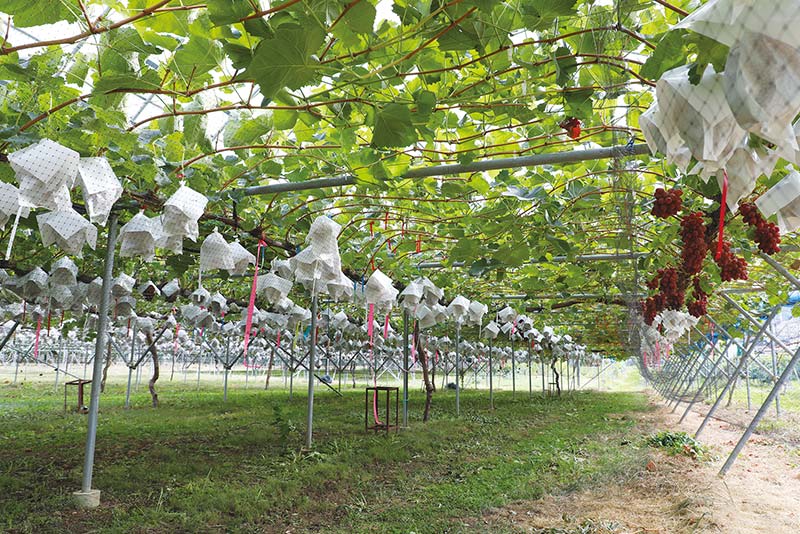
Nagano The prefectural fruit tree experimental center conducts test cultivation of grapes in one hectare field, and other grapes such as apples, peaches, and plums are also grown in 10 hectare field.
"I hope that it will grow into a variety that will be loved by both consumers and producers, like Shine Muscat and Nagano Purple, which is widely popular among children and elderly people, and that it has been popular for decades, and that it will be loved by both consumers and producers. Also, as the name suggests, Ichikawa hopes to become a "Queen of Grapes," as its name suggests," he said. With the expectations of producers and many people involved in the development, Queen Rouge® will finally make its full-scale debut this fall.
ShinshuHigh-class grapes Vol. 1: "The shining red 'Queen Rouge', Queen Rouge®, makes her debut!"
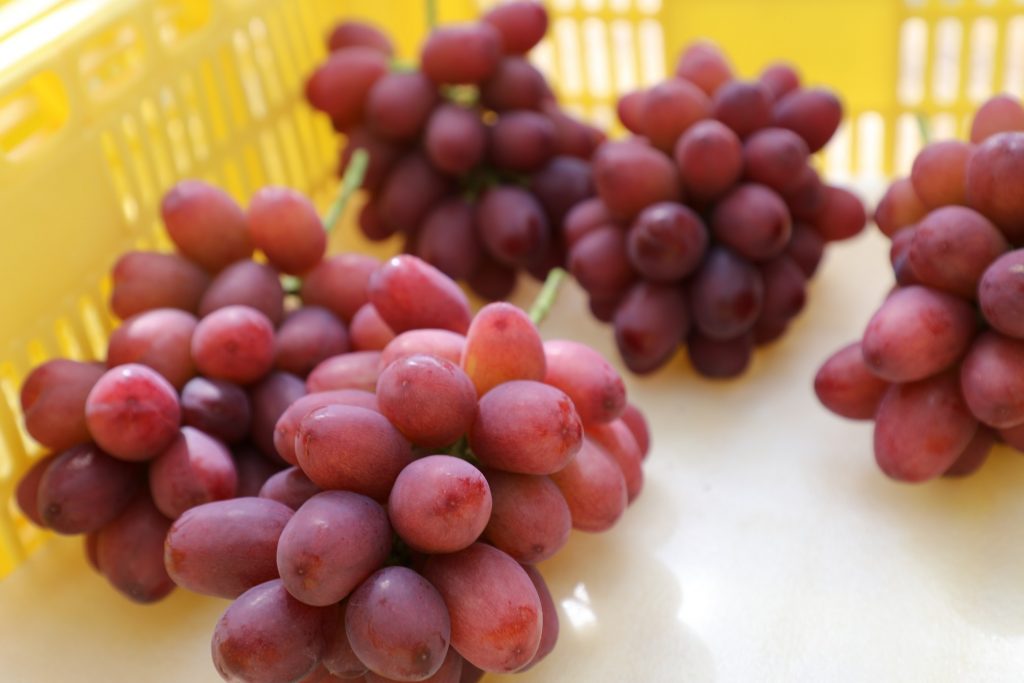
Top class sunlight in the nationTimesIt combines the conditions necessary for delicious fruit cultivation, such as the large temperature difference between day and night. Nagano prefecture.
It boasts the second largest producer of grapes in the country, a representative autumn fruit, and a variety of varieties are grown all over the prefecture.
That Nagano Queen Rouge®, a new high-quality grape variety developed over the prefecture over more than 10 years, will finally make its market debut this fall.
A new variety with a beautiful bright red color
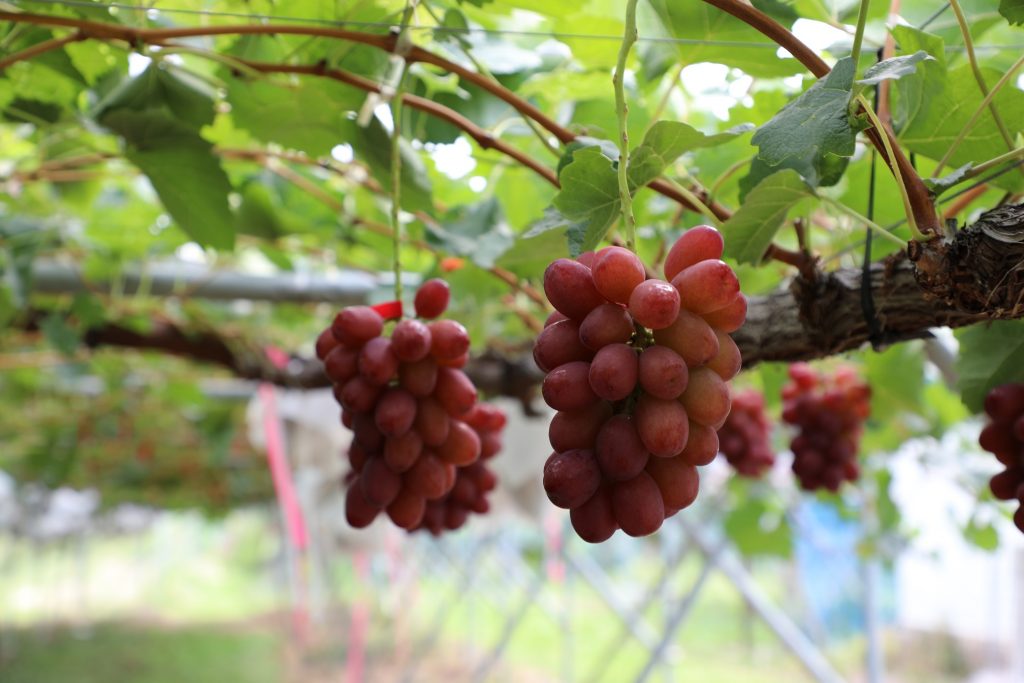
As demand for seeds-free grapes like Shine Muscat have increased, they began developing with the aim of creating a "red" variety with similar characteristics.
It was born from a unicorn that is characterized by its long, reddish purple color and elongated shape, and was made by crossing Shine Muscat.
The most distinctive feature is the bright red color, and while the skin is slightly thinner than Shine Muscat, the flesh is firm, and the skin is crisp and easy to cut.
Farmers in the prefecture have been producing multiple red grape varieties for about 40 years, but the coloring and discoloration have not been stable, and they have been repeatedly trial and error.
That is why there is high hopes for this Queen Rouge®, which has finally been produced, and producers have a strong reputation for being "the red color is clear and the grains are solid, making it easy to make."
It has a sugar content of 20%! The extraordinary sweet Queen Rouge®
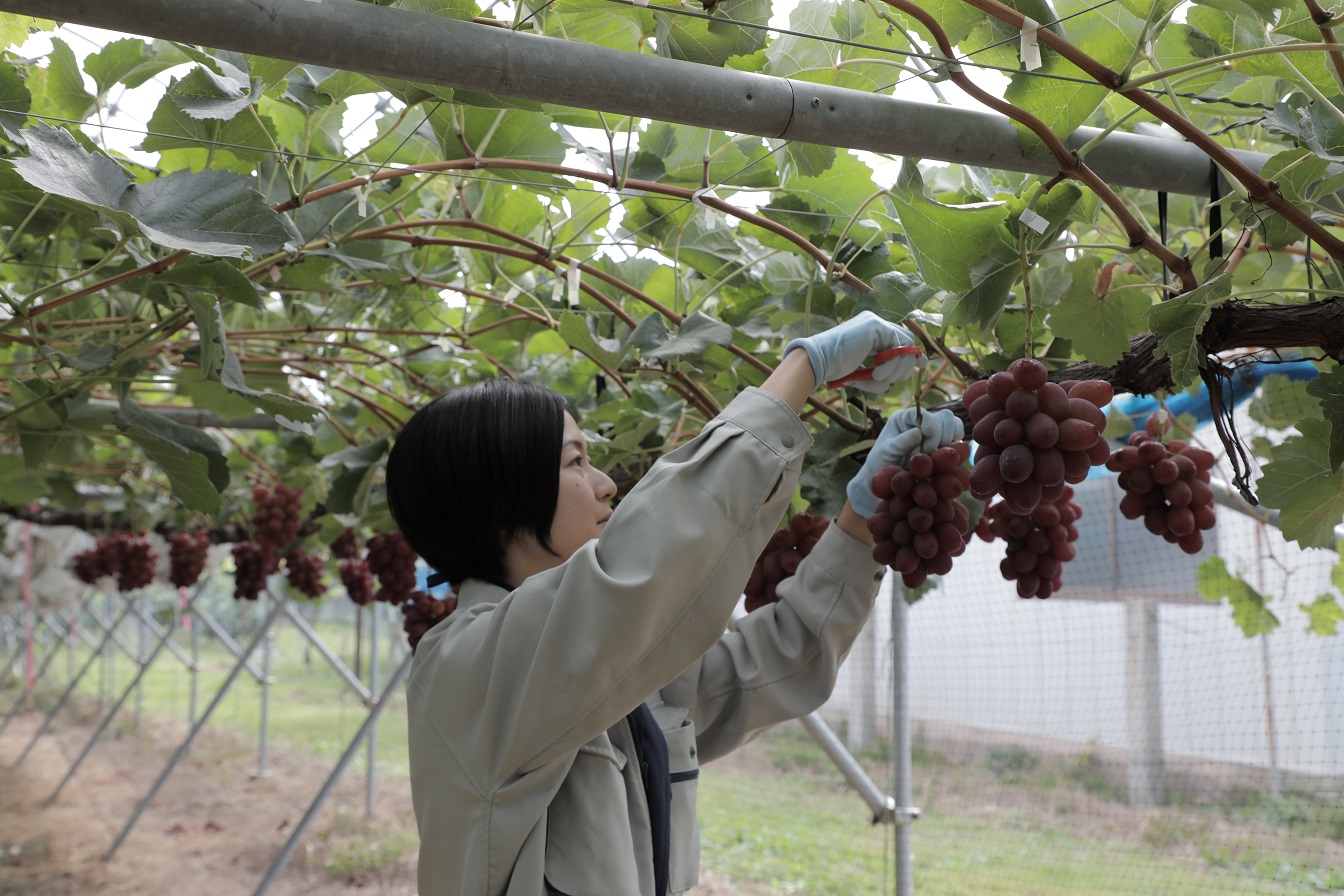
"Ichikawa Etsuko has been a researcher involved in development since 2018.
"When I first ate it, I got the impression that it was sweeter than any other variety," he says, and its average sugar content is 20 degrees, which is more sweet than Nagano Purple (18 degrees or higher) and Shine Muscat (19 degrees or higher) and is also satisfying.
Take a bite and the refreshing aroma of Muscat and elegant sweetness fill your mouth.
"I hope that it will grow into a variety that will be loved by both consumers and producers, like Shine Muscat and Nagano Purple, which is widely popular among children and elderly people, and that it has been popular for decades, and that it will be loved by both consumers and producers. Also, as the name suggests, Ichikawa hopes to become a "Queen of Grapes," as its name suggests," he said.
With the expectations of producers and many people involved in the development, Queen Rouge® will finally make its full-scale debut this fall.
*This article is information as of September 2021. Please note that the products we carry may have changed.
[ Nagano Prefectural Fruit Tree Experiment Station]
492 Ogawara, Suzaka City TEL 026-246-2415 https://www.pref.nagano.lg.jp/kajushiken/
The grapes are concentrated! The charm of Kyoho is brought to the world
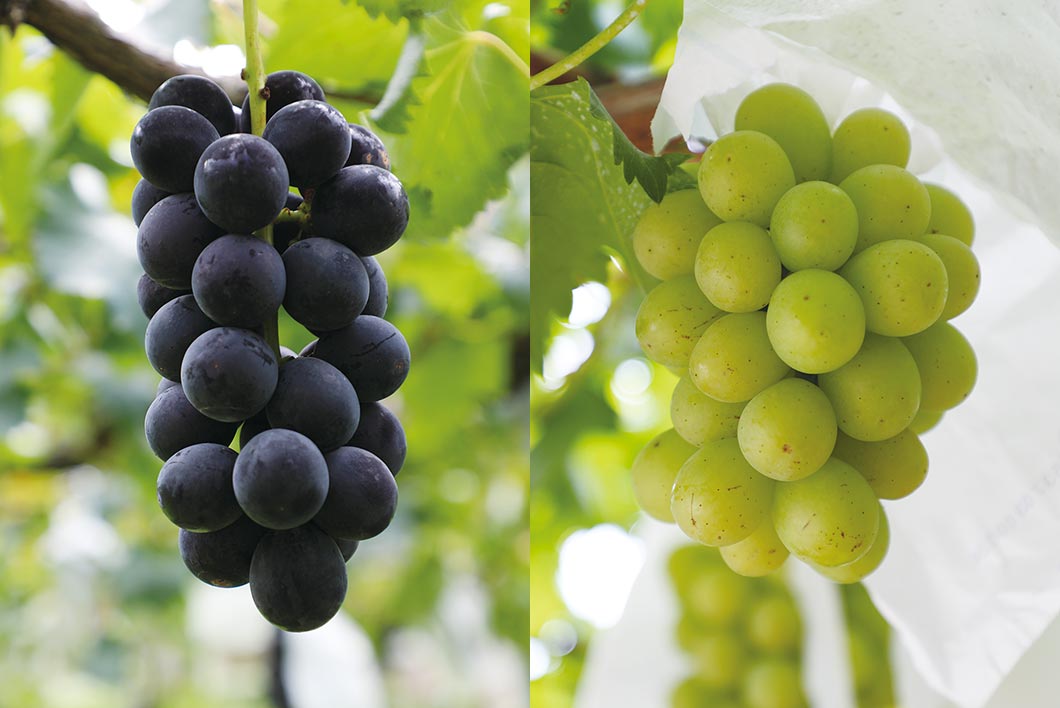
At Shukaen, 30% of Kyoho and 70% of other varieties have been cultivated, and we have started cultivating many grapes because we want to offer a balanced proposal to our customers, including appearance, aroma and texture.
Shukaen Co., Ltd. (Tōmi City
presidentWatanabe Takanobu
Kyoho is also known as the "King of Grapes" and is still very popular today. It has many loyal fans and has been loved for many years.
Nagano The "Mother's Tree," a Kyoho tree, which is said to have been planted in the prefecture, isTōmi CityShukaen. At the end of the 1940s, when the predecessor was thinking about a shift from an apple, he received information from a relative who works at a major Tokyo company that "Muscat of Alexandria grapes are very popular because they are available at high prices," and he was moved by his desire to try growing high-grade fruits.
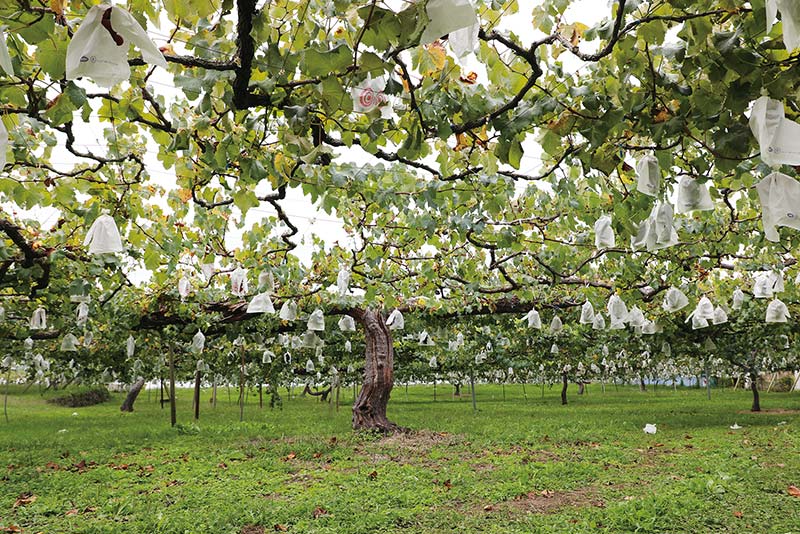
A large tree from Kyoho, known as the "Mother's Tree." Even now, 65 years later, it is still producing delicious Kyoho fruit.
After that, along with five local farmers, they visited Oinoue Yasushi of Izu, a breeder and creator of Kyoho, and handed over the scion, and planted it in Shukaen in the spring of 1956. This tree is the "mother's tree." When cultivation technology was established in the 1960s, cultivation became popular all over the prefecture. Even now Nagano The prefecture boasts the number one production volume. With the advent of various varieties, some farmers have stopped growing Kyoho in recent years, but Shukaen has been working with cultivation with a special touch for 65 years.
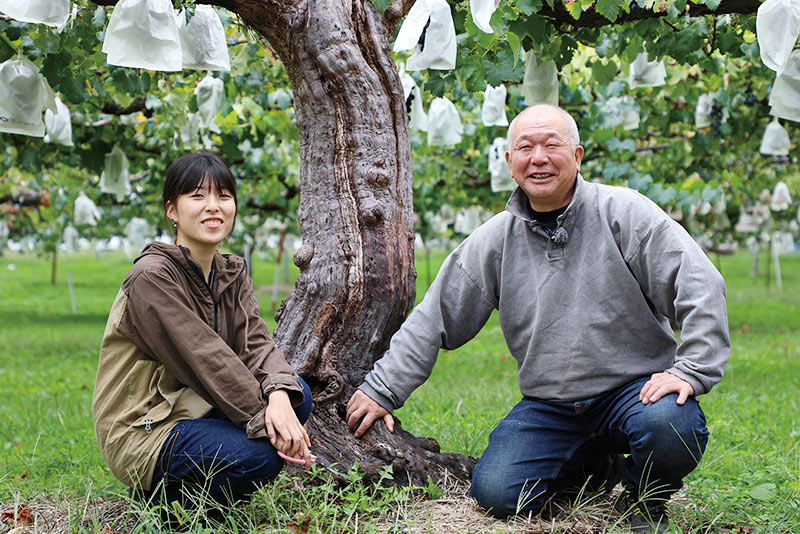
The current presidents Watanabe (right) and Okuhara (left). Many young farmers are active at Shukaen.
"It's a hassle to remove the skin and seeds, but the umami flavor of the grapes is concentrated around the seeds. I think Kyoho, which has a rich flavor and has a truly grape-like variety. I watched over them from a young age, dedicated my life, and Nagano I also have a strong attachment to Kyoho, which is synonymous with high-class grapes, which has laid the foundation for the development of grape cultivation in the prefecture. "We would like to continue to convey the charm of Kyoho in the future," says Watanabe Takanobu, representative of Shukaen.
At the same time, Shukaen strives to grow grapes that meet the needs of its customers, and grows over 30 varieties of grapes, mainly the popular Shine Muscat, Nagano Purple, and Queen Rouge®.
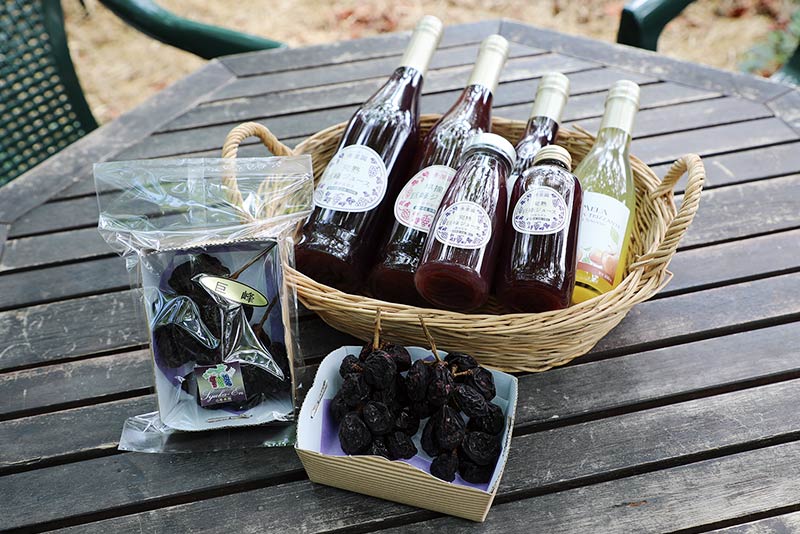
It has also been decided that it will be exported overseas, and we will also develop products such as Kyoho and semi-dried grapes using our own grapes.
"Japan's safe and secure agricultural products are highly regarded overseas, and I really love it, Nagano I think the prefecture's agricultural products are delicious. In the future, we would like to focus on our efforts to convey the deliciousness to the world as our life's work," Watanabe said. Shukaen's challenge continues.
ShinshuHigh-class grapes Vol. 2 "The grapes are condensed! The charm of Kyoho is brought to the whole world"
Kyoho is also known as the "King of Grapes" and is still very popular today. It has many loyal fans and has been loved for many years.
Nagano He was a key player in leading the growth of the prefectural grape industry, and is still today Nagano Kyoho is the prefecture's number one production volume.
That Nagano Did you know that the Kyoho tree, which is said to have been planted in the prefecture, still produces delicious Kyoho tree, which is still in operation?
Nagano "Mother's Tree" is the origin of the prefecture's Kyoho cultivation
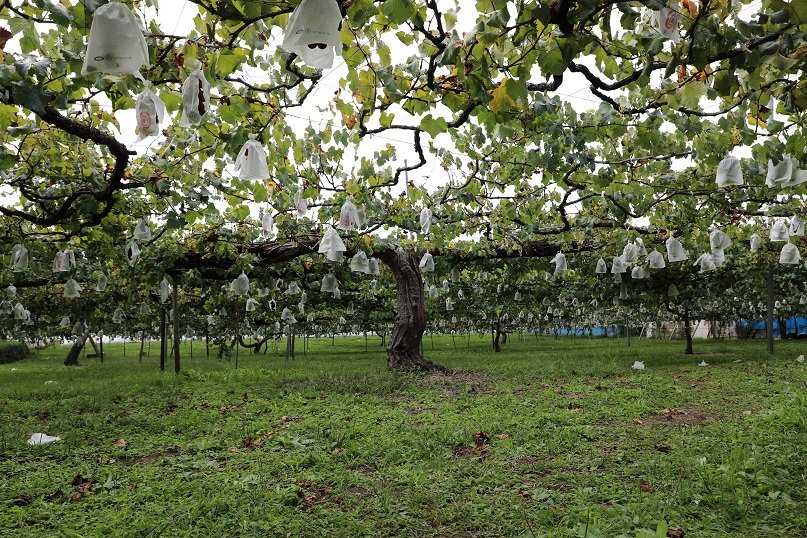
Nagano The "Mother's Tree," a Kyoho tree, which is said to have been planted in the prefecture, isTōmi CityThis is Shukaen.
Shukaen was originally a farmer who grew apples and rice.
At the end of the 1940s, when the previous generation was thinking about a shift from apples, a relative who works at a major Tokyo company said that "Muscat of Alexandria grapes are sold at high prices and are extremely popular in Tokyo," and this inspired him to try growing high-grade fruits.
After that, along with five local farmers, they visited Oinoue Yasushi of Izu, a breeder and creator of Kyoho, and handed over the scion, and planted it in Shukaen in the spring of 1956. This tree is the "mother's tree."
Nagano Kyoho cultivation in the prefecture
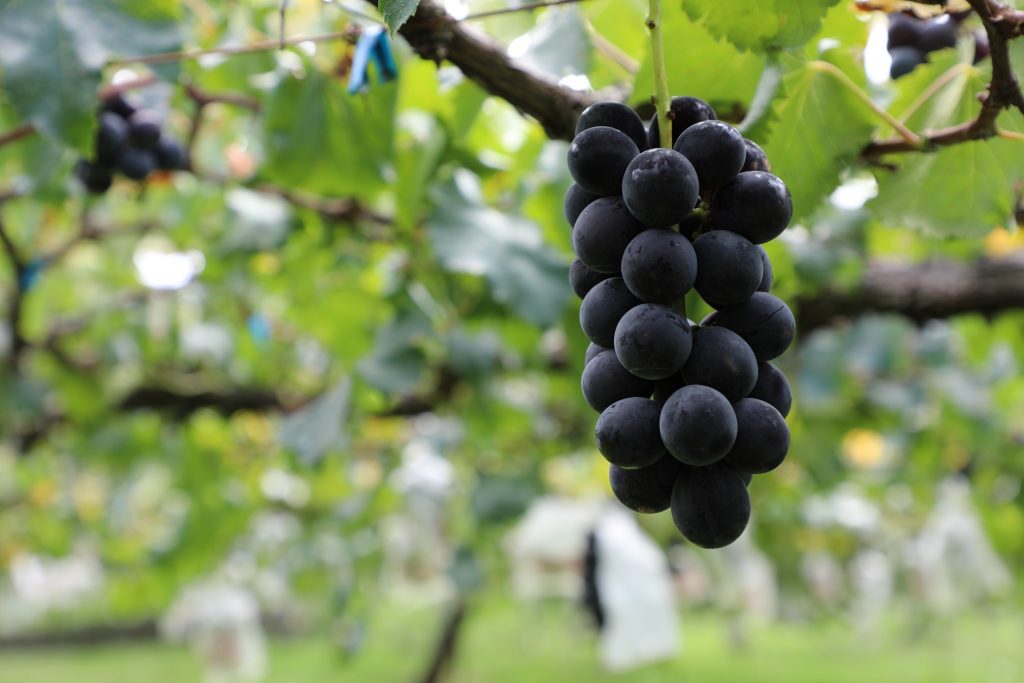
Although its large grain and strong sweetness are attractive, it is difficult to cultivate. It is said that it took more than 40 years from its development in 1937 to become popular.
Although cultivation began by pioneers, including Shukaen, it took many years for it to become widely used in the prefecture.
When cultivation technology was established in the 1960s, it was just like grapes. Nagano In addition to being able to harvest between the prefecture's representative apples, Tsugaru (harvest period: mid-August to September) and Fuji (harvest period: late October to mid-November), the apples are also different from those that do not require you to go up and down ladders when harvesting, and because they are traded at high prices, cultivation has become popular in the prefecture all at once.
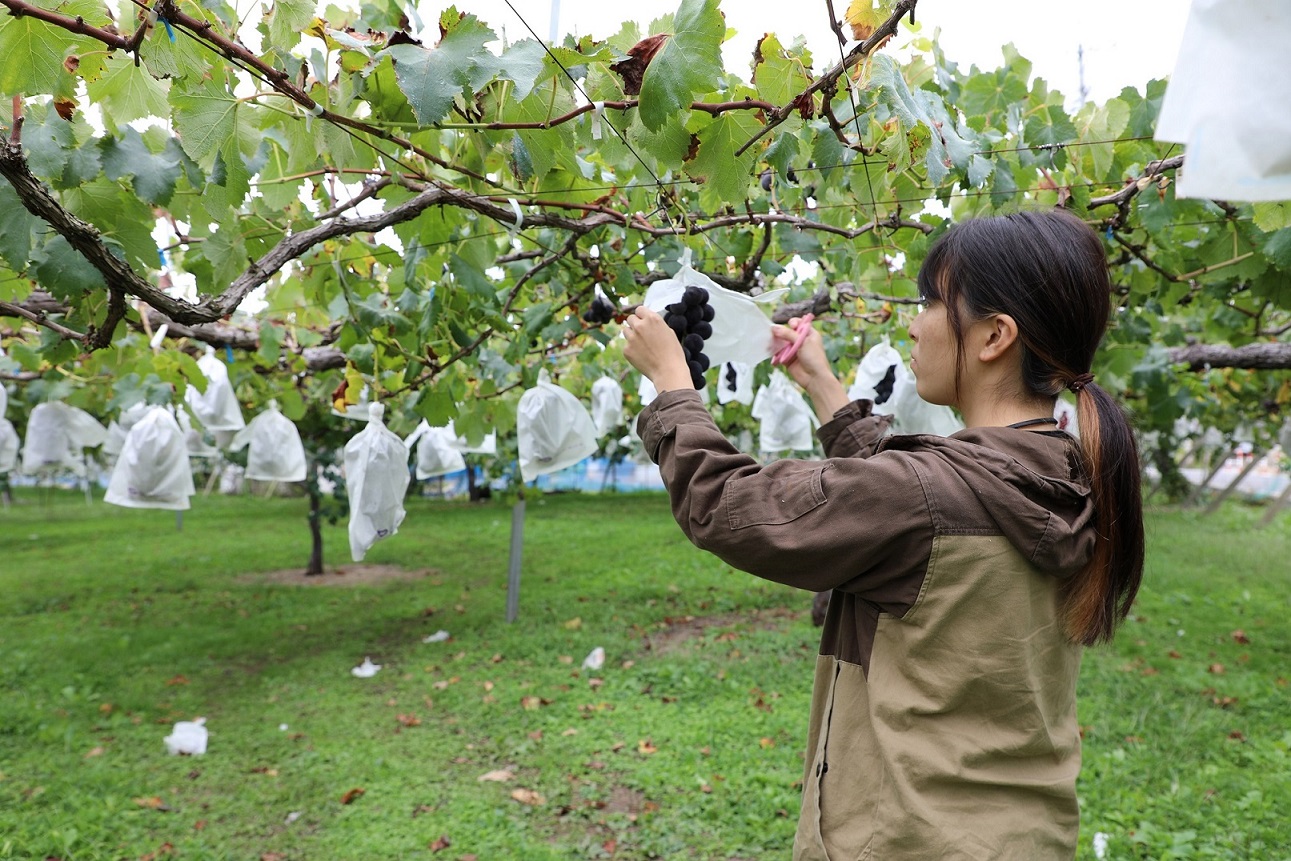
Many young farmers are active at Shukaen.
Production peaked in 1997, and for more than 30 years, the company has been making a new record of " Nagano Kyoho became known as the "Kyoho" grapes of the prefecture.
Exactly Nagano It can be said that it has supported the development of the grape industry in the prefecture.
Why did it come to be called "Kyoho"?
Kyoho was created in 1937 by Oinoue Yasushi of Izu with the aim of cultivating large, sweet European species that can be grown even in the Japanese climate.
It is said that it was named after Mount Fuji, which can be seen from the birthplace of Izu, and is said to have come from the "giant grain made from the peaks of Izu" = Kyoho.
Source: Ministry of Agriculture, Forestry and Fisheries "Aff" May and June 2019 issue P5 (https://www.maff.go.jp/j/pr/aff/1905_06/spe1_01.html
My thoughts on growing Kyoho
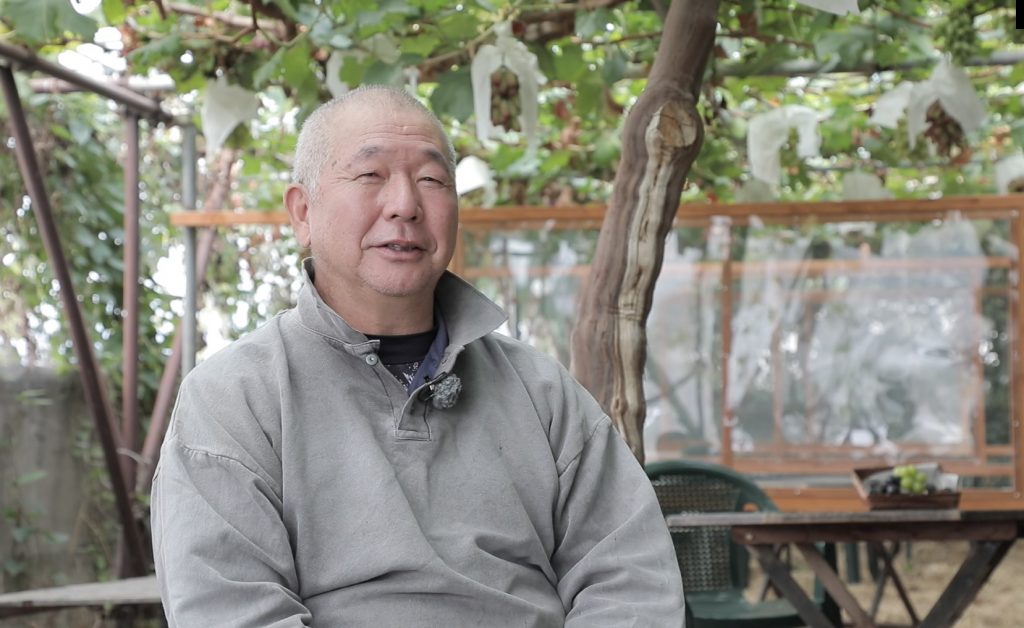
Watanabe, representative of Shukaen
With the advent of various varieties, some farmers have stopped cultivating Kyoho in recent years, but Shukaen has been working with cultivation with a special touch for 65 years.
"It's a hassle to remove the skin and seeds, but the seeds condense the original umami flavor of the grapes. I think Kyoho, which has a rich, rich flavor, is the most grape-like variety. I watched over them from a young age and dedicated my life. Nagano I also have a deep affection for Kyoho, which is synonymous with high-class grapes, which has laid the foundation for the development of grape cultivation in the prefecture. "We would like to continue to convey the charm of Kyoho in the future," says Watanabe Takanobu, representative of Shukaen.
Producers and chefs who know the taste of grapes have also heard comments such as, "Even if the sugar content is the same, nucleated grapes have a richer flavor, while those without nucleation feel sour." This Kyoho has a seed that allows you to enjoy the original grape-like flavor.
It is also said that nucleated grapes last longer than nucleated grapes, and the fruits grow larger.
Although there has been a growing need for varieties that can be eaten without seeds or skins in recent years, people's preferences vary from person to person.
There are many loyal fans of Shukaen's Kyoho, and many customers are looking forward to the Kyoho season.
Grape cultivation to meet the needs of our customers
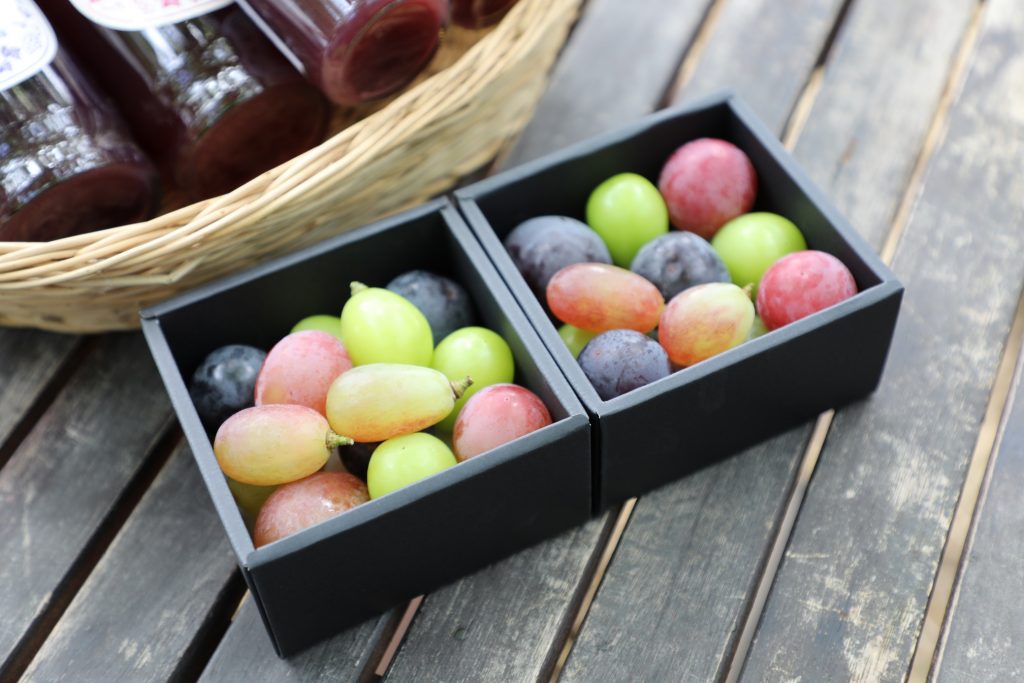
"We value listening to our customers' opinions, and strive to make the grapes our customers want. We work to cultivate them so that we can offer them a balanced way to make the grapes they want during the time of delivery, considering the variations in color, shape, aroma, and texture when they eat," says Watanabe.
As the saying goes, Shukaen pursues grape production that meets the needs of its customers, and now we have grown more than 30 varieties of grapes, mainly Kyoho, as well as the popular Shine Muscat and Nagano Purple.
Nagano Delicious agricultural products overseas
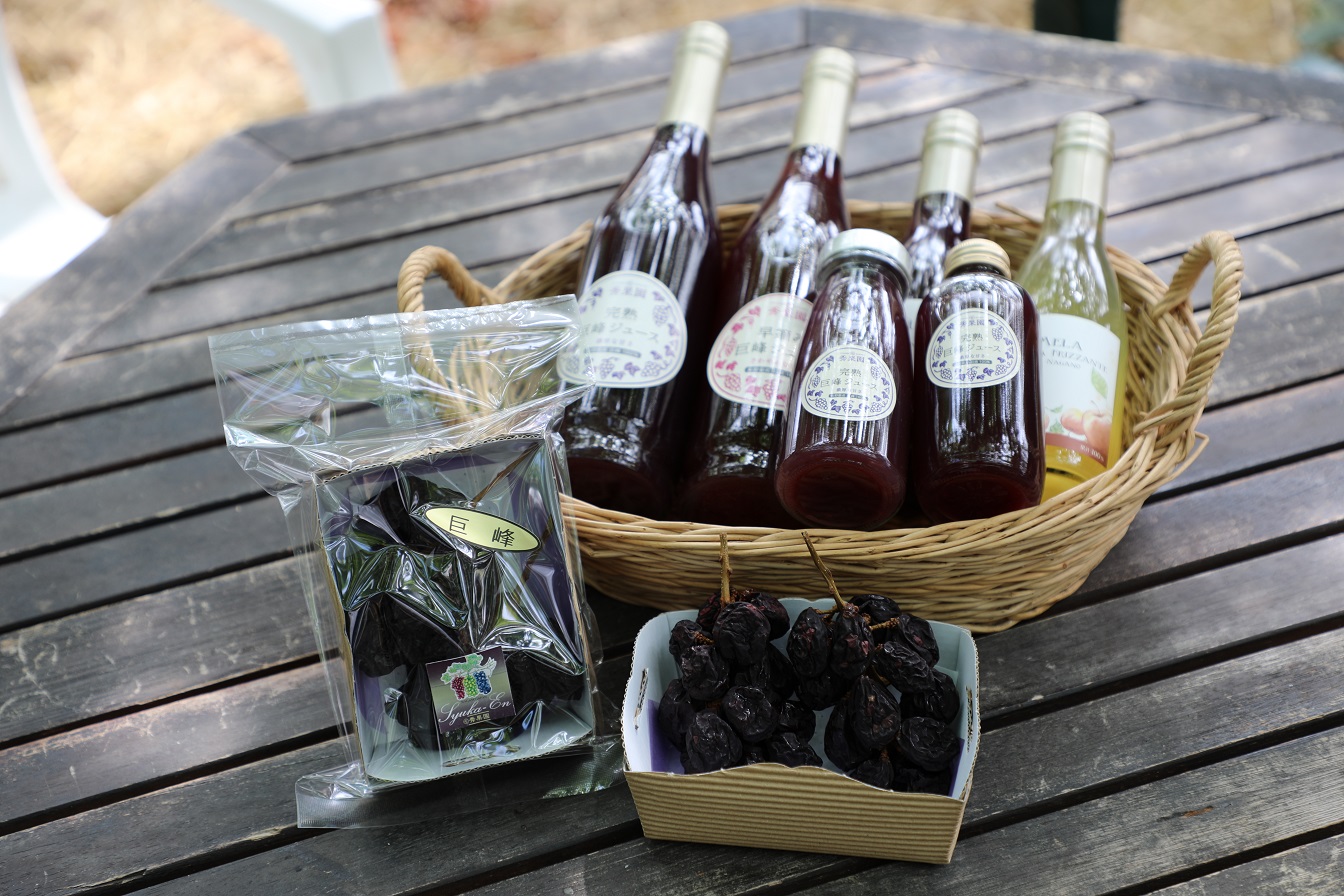
Shukaen also develops products such as semi-dried grapes using our own grapes, and also exports overseas.
"Japan's safe and secure agricultural products are highly regarded overseas, and I really love it, Nagano I think the prefecture's agricultural products are delicious. In the future, we would like to focus on our efforts to convey the deliciousness to the world as our life's work," Watanabe said. Shukaen's challenge continues.
[Shukaen Co., Ltd.]
Tōmi CityWa 2789 TEL 0268-64-7005 https://syuka-en.com/
This article is information as of September 2021.
Please note that the products we carry may have changed.















